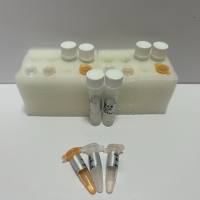One of the major strengths of Flow Cytometry is its ability to perform multiple measurements on single cells within a heterogeneous mixture. When the populations of interest are relatively rare, analytical methodology that is adequate for more prevalent populations is often overcome by sources of artifacts that become apparent only when large numbers of cells are acquired. This chapter presents three practical examples of rare event problems and gives detailed instructions for preparation of single cell suspensions from bone marrow, malignant effusions, and solid tissue. These examples include detection of mesenchymal stem cells in bone marrow, characterization of cycling/aneuploid cells in a breast cancer pleural effusion, and detection and subset analysis on adipose-derived pericytes. Standardization of the flow cytometer to decrease measurement variability and the use of integrally stained and immunoglobulin capture beads as spectral compensation standards are detailed. The chapter frames rare event detection as a signal-to-noise problem and provides practical methods to determine the lower limit of detection and the appropriate number of cells to acquire. Detailed staining protocols for implementation of the examples on a three-laser cytometer are provided, including methods for intracellular staining and the use of DAPI to quantify DNA content and identify events with �2N DNA. Finally, detailed data analysis is performed for all three examples with emphasis on a three step procedure: (1) Removal of sources of interference; (2) Identification of populations of interest using hierarchical classifier parameters; and (3) Measurement of outcomes on classifier populations.






